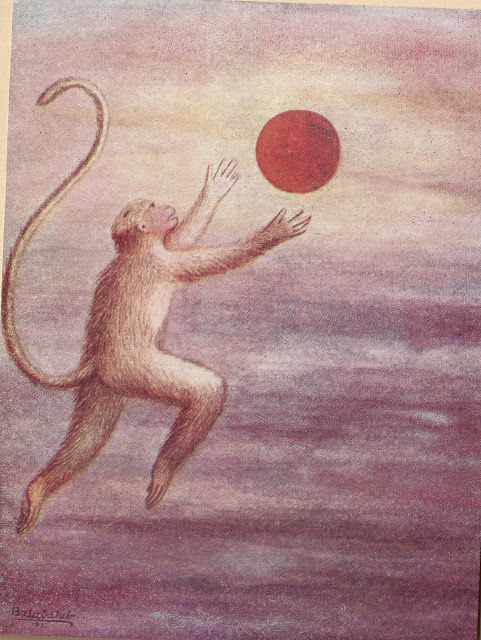Written by Tulasidasa, the Hanuman Chalisa. Excellent 16th-century Ramachandra devotee. An informal Rama epic that he wrote is called the Rama-charita-manasa. Numerous followers recite the Shri Hanuman Chalisa, composed by this wonderful saint and poet.
The distance between the Sun and Earth may have been precisely calculated by Tulasidasa in one of these verses of the Hanuman Chalisa.
Finding the Sun's Distance: Astronomers' Quest
The contributions of Greek astronomers to our knowledge of the cosmos are well-documented.
The Greek mathematician and philosopher Archimedes, who lived in the third century BC, calculated that the distance from the Sun to Earth was 10,000 times that of Earth's radius.
Hipparchus, writing in the second century BC, later estimated that it was 490 times the radius of Earth.
Ptolemy estimated that it was 1,210 times the size of Earth's radius.
Johannes Kepler (1571–1630), a German mathematician and astronomer, found these figures drastically low. Astronomers used Kepler's law of Planetary Motion to calculate planet distances from the Sun. After the introduction of the telescope in the early 17th century, they could measure more accurately.
Recent 20th-century estimations estimate the distance to be 23455 times Earth's radius (149,431,805 km assuming a 6371 km radius).
According to Srila Prabhupada, modern scientific calculations must be revised since they are constantly being revised to account for new findings. We must trust the Vedic literature's calculations. The Vedic literature contains astronomical computations that are accurate with time. We consider the Vedic analyses proper, yet whether they are superior to modern ones remains a mystery.
Modern Calculation
According to contemporary calculations, the average distance between the Sun and Earth is 149 million kilometers (92 million miles).
The Earth orbits an ellipse. The Sun is sometimes closer to Earth and sometimes further.
Early January: 91 million miles = 147 million kilometers (perihelion) is the shortest distance between the Sun and Earth.
Early July: 94.5 million miles = 152 million kilometers (aphelion) is the farthest distance between the Sun and Earth.
Interestingly, 16th-century Tulasidasa gave the most precise estimate, close to 20th-century astronomers.
Let's figure out the math in Hanuman Chalisa...
When young Hanuman mistook the Sun for a juicy mango, he jumped. Tulasidasa describes what happened in the following way in his Hanuman Chalisa:
yuga-sahasra-yojana para bhanu
leelyo tahi madhura phala janu
Hanuman jumped to consume the Sun because he thought it was a delicious fruit.
Here, the yuga-sahasra-yojana distance he covered is indicated. Let's figure this out.
A yuga, what is it? One Brahma day, or Kalpa, is said to be equivalent to a thousand Brahma ages, or yugas, in the Bhagavad-gita.
sahasra-yuga-paryantamaharyadbrahmanoviduh
ratrim yuga-sahasrantamte ‘ho-ratra-vidojanah
Yog = 4,320,000 years = 12000 divine years
(1 heavenly year = 360 human years)
Manu-samhita confirms: etad dvaadasha sahasram devanam yugamuchyate
The Hanuman Chalisa verse states that the Sun-Earth distance is
Yuga-sahasra-yojana = 12000 x 1000.
The 14th-century scholar Parameshvara, who created the drgganita system, estimated that yojana = 8 kilometers. And 1 mile = 1.60934 km.
The Hanuman Chalisa Calculation
Hanuman Chalisa's computation for the distance between the sun and earth is significantly closer to the modern scientific calculation, coming in at 12000 x 1000 yojanas, or 96 million miles, or 153.6 million kilometers.
Our above calculations are based on the following assumptions:
Based on what is said in the Bhagavad-gita and the Manu Samhita, we used the time calculation technique of the Vedic period and took yuga to imply the number 12000.
Based on what Srila Prabhupada has said in his purports, we determined that 1 yojana is approximately 8 miles. Scholars continue to argue on whether this distance is 5 or 8 miles. Values between 7.6 and 8.5 miles have been derived using alternative calculations.
To Sum Up
Amazingly, Tulasidasa mentioned this distance with such precision in the 16th century, when Western astronomers were using telescopes to try to calculate it.








No comments
Do not enter any spam link in the comment box